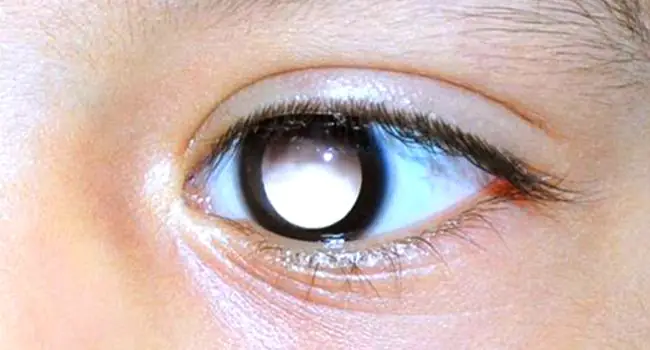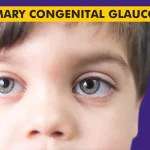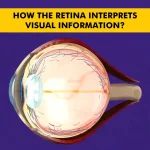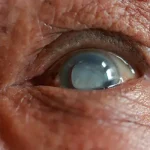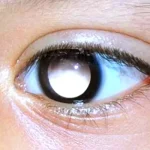Imagine you’re playing peek-a-boo with your little one, while they giggle, you notice a strange white reflection in their eye. It’s easy to neglect it as a trick of the light, but it could be a sign of retinoblastoma, a rare eye cancer that mostly affects young children.
It sounds scary, but the good news is that with today’s medical advancements, Retinoblastoma is often treatable. The key is to especially catch it early. Let’s put forth all about Retinoblastoma eye and how to cure it.
What Is Retinoblastoma?
Retinoblastoma, an eye cancer that starts in the retina, the part of the eye that senses light and sends images to the brain. It mostly affects kids under five. This happens when the retina’s nerve cells develop genetic changes, causing them to grow uncontrollably and form a tumor.
You may notice signs like a white glow in your child’s pupil, crossed eyes, or difficulty seeing. Diagnosing Retinoblastoma involves a detailed eye exam, imaging tests, and sometimes genetic testing. It sounds worrisome, but there’s hope. With modern advanced treatments like chemotherapy, radiation, laser therapy, and surgery, many children beat Retinoblastoma eye, especially when detected in early stages. Timely medical intervention makes a big difference in successful treatment and saving vision.
Symptoms of Retinoblastoma
Catching the Retinoblastoma symptoms early is crucial in making a difference in treatment outcomes. Here are the signs to watch out for:
- White glow in the pupil (Leukocoria): Often seen in flash photographs, the pupil appears white or cloudy instead of red.
- Crossed eyes (Strabismus): One or both eyes may turn inward or outward.
- Poor vision: The child may have difficulty seeing or frequently bumps into objects.
- Red or inflamed eyes: Persistent redness or irritation in the eyes without any obvious cause.
- Eye pain: The child might express discomfort or pain in the affected eye.
- Enlarged pupil: One pupil may appear larger than the other.
- Different-coloured irises: A noticeable difference in the color of the irises between the two eyes.
- Unusual eye movements: The eyes may move in an abnormal or jerky manner, or not move together as they should.
If you observe any of these symptoms in your child, it’s crucial to seek medical attention right away. Early detection is key to effective treatment and preserving vision.
Causes of Retinoblastoma
Retinoblastoma happens when cells in the retina, the part of the eye that senses light, start growing out of control. This is due to changes (mutations) in their genetic makeup. There are two main types of Retinoblastoma based on how these mutations occur:
- Hereditary (genetic) retinoblastoma: This type occurs due to inherited genetic mutations. If a parent carries a faulty gene, there’s a 50% chance of passing it onto their child. This form often affects both eyes and can be associated with other health issues.
- Non-hereditary (sporadic) retinoblastoma: This type can happen when genetic mutations develop randomly in a child, with no family history of the disease. It usually affects only one eye.
Understanding these causes aids in timely detection and prevention strategies. If there is a family history of Retinoblastoma, genetic counseling and regular eye exams for children are crucial.
Can Retinoblastoma be Cured?
Yes, Retinoblastoma eye can often be cured, especially in an early stage. The treatment plan depends on the size and location of the tumor, whether it has spread, and the child’s overall health. The earlier the treatment begins, the higher the chances of success. Many kids treated for Retinoblastoma lead normal, healthy lives with their vision intact.
How Does Retinoblastoma Develop?
Retinoblastoma starts when the DNA of cells in the eye gets messed up. Usually, DNA tells cells how to grow, divide, and eventually die in a tidy way. But in cancer cells, this plan gets mixed up. They start growing super fast, making too many cells that don’t know when to stop. Instead of dying off like they should, they just keep multiplying. This out-of-control growth forms tumors in the eye.
How Is Retinoblastoma Diagnosed?
Diagnosing retinoblastoma starts with a thorough eye exam, where a healthcare provider uses special tools to check your child’s eyes, including lights to see inside. Sometimes, young children may need medication to help them stay calm during the exam. This exam gives clues about what might be causing your child’s symptoms.
Imaging tests like ultrasound and MRI scans are also used to see how big the cancer is and if it has spread beyond the eye. These tests help decide the best treatment.
Genetic testing looks for changes in the RB1 gene, found in all retinoblastoma cells. Sometimes, these gene changes are in all cells of the body, affecting treatment choices and raising the risk of other cancers. Regular screening tests may be needed to watch for these risks.
Different Types of Retinoblastoma Treatments
Some common treatment options for retinoblastoma include the following:
Chemotherapy: Using powerful drugs to shrink the tumour, making it easier to treat with other methods like surgery or radiation.
Radiation Therapy: Using targeted radiation to destroy cancer cells.
Laser Therapy: Using a focused beam of light to treat smaller tumours or spots.
Cryotherapy: Freezing the cancer cells to kill them.
Surgery: Sometimes necessary to remove the tumour or affected eye to stop the cancer from spreading.
Risks Associated with Retinoblastoma
Untreated retinoblastoma can pose significant risks and complications, affecting both the eye and overall health:
Permanent vision loss: As the tumor grows unchecked, it can impair vision irreversibly.
Spread (Metastasis): If left untreated, retinoblastoma may spread beyond the eye to other parts of the body, complicating treatment and prognosis.
Life-threatening complications: In advanced stages, untreated retinoblastoma can become life-threatening as cancer cells spread throughout the body.
Developmental delays: Children with untreated retinoblastoma may face developmental delays due to ongoing health issues and prolonged treatment requirements.
Preventive Measures of Retinoblastoma
Here are some effective ways to lower the risk of retinoblastoma:
1. Keep up with eye check-ups: Regular eye exams are vital, especially for kids, to catch any signs of retinoblastoma early.
2. Stay alert for early signs: Stay alert for unusual eye reflections, crossed eyes, or changes in vision that could signal retinoblastoma.
3. Genetic insights and counseling: For families with a history of retinoblastoma, genetic counseling offers invaluable guidance on detection and management options.
4. Healthy habits for strong eyes: Encourage a nutritious diet and active lifestyle to bolster overall health and potentially lower cancer risks.
5. Act swiftly on any Concerns: Don’t hesitate to seek prompt medical attention if you notice any unusual eye symptoms or abnormalities.
What Is the Patient Outlook with Retinoblastoma?
- Early detection leads to better outcomes: Finding retinoblastoma early greatly improves the chances of successful treatment and preserving vision.
- Effective treatment options bring hope: Treatments like chemotherapy, radiation, and surgery are often successful, leading to complete recovery in many cases.
- Ongoing monitoring for maintaining health: Regular check-ups are essential to monitor for any signs of recurrence or long-term effects of treatment.
- Quality of life after treatment: With timely intervention, many children lead healthy lives after retinoblastoma treatment, with minimal impact on daily activities.
- Supportive care for families: Families can access support from healthcare teams and organizations, ensuring they have the resources needed for the journey ahead.
Why Choose Centre For Sight for Retinoblastoma Treatment?
Choosing CFS for retinoblastoma treatment means going for specialized care that blends expertise and world-class technology. Our team delivers effective therapies specifically to retinoblastoma, ensuring the best possible outcomes.
With a clear track record of success and a commitment to personalized treatment plans, we offer care that prioritizes the health and well-being of every patient. Be it advanced medical interventions or supportive services for families, Centre For Sight comes with a holistic approach that promotes a positive treatment experience. To book your appointment, log onto https://www.centreforsight.net/
FAQs
What is the life expectancy of retinoblastoma?
Life expectancy for retinoblastoma depends on early detection and effective medical treatment. With timely medical care, many children can lead healthier lives without facing any impact on their own life expectancy. Regular check-ups are non-negotiable for ongoing management.
Is retinoblastoma curable?
Yes, retinoblastoma cure is available. With early detection and timely treatment, most children fully recover and lead healthy lives.
How is retinoblastoma diagnosed in a child?
Doctors diagnose retinoblastoma in children using eye exams, imaging tests, and genetic testing. Early detection through these methods is key for successful treatment and recovery.
What are the first signs of eye cancer?
The first signs of eye cancer include noticing a white glow in the pupil, experiencing vision changes, or seeing redness and swelling in the eye. Detecting these symptoms early is crucial for effective treatment.
How common is retinoblastoma?
Retinoblastoma occurs in about 1 in 15,000 to 20,000 live births, making it a rare childhood cancer. Early diagnosis and treatment are crucial for the best outcomes.
What are the symptoms of retinoblastoma?
Signs of retinoblastoma in children can include noticing a white glow in the pupil, crossed eyes, changes in vision, and redness or swelling of the eye. Early recognition of these symptoms is critical for swift treatment and better chances of recovery.
Can retinoblastoma kill you?
Retinoblastoma can be life-threatening if untreated, but early diagnosis and proper treatment lead to high survival rates of over 95%. Early action is crucial for positive results.
What are the treatment options for retinoblastoma?
Treatment for retinoblastoma may include chemotherapy, radiation, freezing (cryotherapy), laser therapy, or surgery, depending on the cancer’s stage and the child’s health. Detecting it early improves treatment outcomes.
